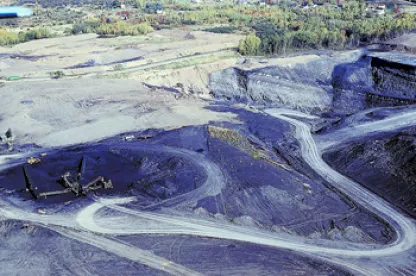United States of America v. Osage Wind, LLC et al., 871 F.3d 1078 2017 WL 4109940 (10th Cir. Sept. 18, 2017). Causing heartburn for project applicants developing on tribal land, the Tenth Circuit reversed the District Court for the Northern District of Oklahoma’s grant of summary judgment and determined that the defendants’ large-scale excavation project, involving site modification and the use of excavated rock and soil in the installation of wind turbines, constituted “mining” under federal regulations addressing mineral development on Native American land. Id. at *1. This decision creates new obligations for developers, which could result in delay and additional costs.
In 1872, Congress established a reservation for the Osage Nation pursuant to the Act of June 5, 1872. While the subsequent Act of June 28, 1906 (Osage Act) created freely alienable lots from the surface estate of the reservation to be parceled out to individual tribe members, it severed the Osage mineral estate from the surface estate and reserved it for the benefit of the collective Osage Nation. Id. The Osage Act empowered the Osage Nation, as the beneficial interest in the mineral estate, to issue leases for “all oil, gas, and other minerals” in the estate. Id. Those leases would then require approval of the U.S. Department of the Interior (DOI). Id.
In furtherance of this power, DOI promulgated several rules. Id. at *2. One such rule is 25 C.F.R. part 211.3, which defines mining as “the science, technique and business of mineral development . . . if the extraction of such mineral exceeds 5,000 cubic yards in any given year.” DOI also adopted 25 C.F.R. part 214, which provides “[n]o mining or work of any nature will be permitted upon any tract of land until a lease covering such a tract shall have been approved by the Secretary of the Interior.”
In September 2014, Osage Wind, LLC (Osage Wind) commenced excavation for its planned commercial wind farm (the “Project”) on 1.5 percent of the 8400 acres of private fee land in Osage County under lease with the Osage Nation. Id. at *2–3. The Project required the installation of 84 wind turbines secured in the ground by reinforced concrete foundations, underground electrical lines running between turbines, a substation, an overhead transmission line, meteorological towers, and access roads. Id. at *2.
Each turbine required the support of a cement foundation up to ten (10) feet deep and sixty (60) inches in diameter. Id. at *2. In creating the large holes needed for these foundations, Osage Wind excavated soil, sand, and rock of varying sizes. Id. Rocks smaller than three (3) feet were crushed into smaller sizes that were then pushed over the completed foundation and compacted into the remainder of the hole. Id.
In November 2014, the United States, as trustee of the Osage mineral estate, filed suit for damages resulting from this excavation work, alleging the excavation and extraction were “mining” under 25 C.F.R. § 211.3, thereby requiring a mineral lease pursuant to 25 C.F.R. § 214.7. Id. The district court disagreed with this allegation, and awarded summary judgment in favor of Osage Winds. Id. Osage Mineral Council (OMC), intervenor and representative of the Osage Nation as it relates to the Osage mineral estate, appealed on this issue. Id.
In its opinion, the Tenth Circuit explained its analysis did not depend on administrative deference to DOI materials and would, instead, focus on the regulatory text by its own terms. Id. at *6–7. Under this lens, the court took issue with the district court’s holding that the definition of mining necessarily involves the commercialization of mineral materials (i.e., the sale of minerals). Id. at *8. The court specifically found that, while the definition of mining “certainly includes commercial mineral extraction and even offsite relocation of materials, the district court’s limitation of ‘mineral development’ to those contexts is overly restrictive.” Id. (emphasis included). It found no support in the text of 25 C.F.R. § 211.3 confining mineral development merely to the commercialization or relocation of materials. Moreover, the court was not persuaded by Osage Wind’s attempts to support the district court’s narrow construction of the term at issue by reference to other provisions that contemplate the sale of minerals. Id.
Instead, recognizing the long established principle that ambiguity in laws designed to favor Native Americans ought to be liberally construed in their favor, the court adopted the interpretation of § 211.3 that favors the Osage Nation because the regulations at issue were designed to protect Native American mineral resources and “maximize [their] best economic interest.” Id. at *9 (quoting 25 C.F.R. § 211). Under the principles of statutory interpretation, the court also found that each item in the definition of “mining” involves an action upon the minerals to “take advantage of them for some purpose.” Id. This would include actions upon the minerals in order to exploit the minerals themselves, as was done by Osage Wind when it sorted and crushed the excavated rocks for backfill in the foundation holes and stabilization of the turbines. Id. at *10. Holding Osage Wind’s excavation work constituted “mining” under section 211.3, the court determined Osage Wind impermissibly failed to secure a federally approved lease from OMC under section 214.7, rendering the lower court’s summary judgment for Osage Wind improper.




 />i
/>i

